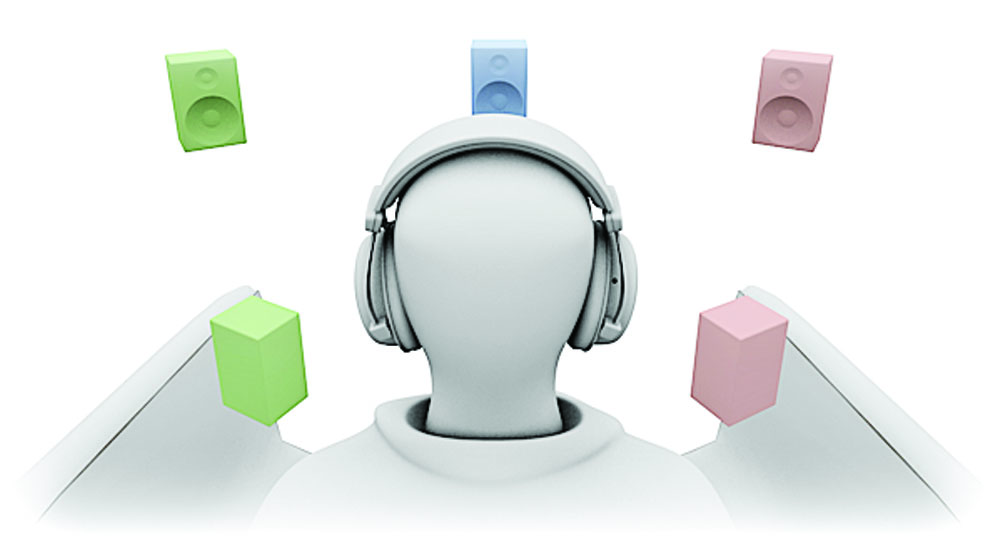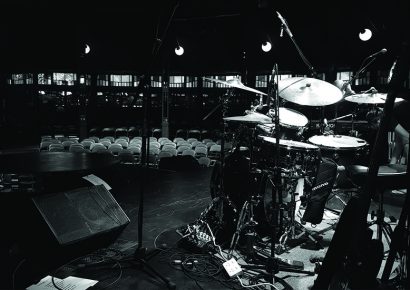We have all encountered surround sound by now. Most of us have systems set up in our living rooms with the TV as the centrepiece, trying to replicate the cinema experience in the home. I would hazard a guess that many of you have not considered this for your home studio monitoring setup, yet plenty of you will be creating music for video and film, without the right tools for the job. And it is not just for film that surround sound is being implemented, with music videos and live performances now regularly being mixed in 5.1, it is becoming more of the norm to have a surround system in the studio. With most major DAW software platforms supporting 5.1 mixing, it makes sense to take advantage of this modern listening ideal, even when just mixing for a stereo result.
I think it is safe to say that the biggest mistake made when setting up a 5.1 surround studio mixing environment in the home studio is the imbalance of the speakers used. It’s understandable that this occurs when you consider most people’s reference of a 5.1 surround system. Generally in a home theatre system, the centre and rear speakers are smaller and less powerful than the two main speakers, only providing ambient and environmental sounds to create a sense of space. It often results in an uninformed purchasing decision that sees some people using smaller monitors for their rear speakers in a surround mixing environment. This causes a range of issues and can best be addressed by not doing it in the first place. Having speakers that deliver not only different sound pressure levels, but also different frequency responses around the room doesn’t allow you to mix your surround image properly. You wouldn’t try to mix a stereo recording on two different studio monitors for your left and right speakers, so why would you even consider using different speakers for your rear or centre sounds in a 5.1 mix? Different speakers require a lot of calibration to get them all to behave in a similar fashion, and even then, only a similar behaviour is the best outcome, not a perfect balance. Yes, you will have less volume and direct sounds coming from the rear speakers, but you need to hear them in relation to the front speakers to understand how much of the mix needs to sit in their realm. If they are underpowered or delivering different frequency responses, you’ll allocate the mix levels to them incorrectly and when heard through a home theatre system it will stand out even more.
The other consideration is what sub you bring into the mix to achieve the right balance. As with a stereo mixing setup, there are certain subs that work well with your monitors and others that do not. Brands like Genelec offer built in monitor control with crossovers for surround mixing in the matching sub, but this isn’t the case with most monitors that are found in home studios. When you decide to go surround, the first thing is to ensure your additional speakers are the same as your stereo pair. Then add a sub that would complement the original pair – don’t think you need more power to balance out the additional speakers. Too much power from your sub will just result in mixes that lack low frequencies on other systems. Studio monitor room correction devices, like KRKs Ergo system are a great addition to any monitoring setup to get the balance between the montiors, the sub and the space correct. Sadly these sorts of systems get very expensive when looking into surround setups, usually designed for professional post-production suites and never really with the home studio in mind. Introducing a stereo speaker management system into your surround mixing setup is a great way to get the sub sitting right. From there you can set the centre and rear speakers to balance out with the main left and right pair. It’s not ideal, but after shelling out for additional speakers, this is a very cost effective way of making the most of your system and not overloading the bottom end unknowingly. The result gives you a balanced system that allows you to mix both music and video soundtracks in 5.1 surround sound with very good results.
Most home studios are dealing with a range of complications that aren’t usually faced by professional production houses. The main issue being the room itself, as it is rarely ideal for a stereo speaker monitoring setup, let alone five speakers and a sub, so finding a compromise is the most important factor. Use speakers that work within the space you have. You don’t need five giant 8-inch drivers blasting your ears from only a few feet away, especially when the sub is taking care of the lower frequencies. You can very easily get a balanced sound with 5-inch or even 4-inch studio monitors with the correctly balanced sub. Think about the space you are actually mixing in, not the space you want to listen in, then get a system that matches that space as best you can.







